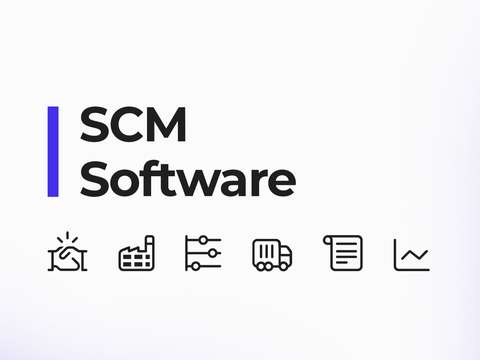Warehouse operations for eCommerce play a fundamental role in the supply chain (and fulfilment costs associated with it) of online stores of all sizes.
Learn what they are, the impact they have on your business and profits, and how to optimize warehouse operations with software systems and three basic principles.
What is eCommerce warehousing?
Ecommerce warehousing is the storage and management of products sold online. It includes organizing inventory, maintaining stock levels, and preparing goods for fulfillment. Warehouses can be owned by retailers or managed by third-party logistics providers (3PLs).
Why eCommerce warehouse management matters
As your business grows, so do your warehouse challenges. Mistakes in fulfillment cost around $35 per error and can eat up 30% of supply chain expenses. A well-optimized ecommerce warehouse shipping process helps keep costs down, orders accurate, and deliveries fast. Automation can boost order accuracy to 99.5%, reducing returns and improving customer satisfaction.
Key benefits of optimizing warehouse shipping in eCommerce:
- Reduce order processing time
- Minimize labor and shipping expenses
- Prevent stockouts and mispicks
- Handle more orders without higher costs
The ecommerce warehouse process explained
Every ecommerce warehouse shipping system follows a structured workflow. Each step ensures products are received, stored, picked, packed, and shipped efficiently. Returns management is also crucial to reintegrate inventory or dispose of damaged goods.
Key stages of the process:
- Receiving and inspection – Log incoming inventory and check for defects.
- Storage and slotting – Organize products for easy access.
- Picking and packing – Retrieve and prepare orders for shipment.
- Shipping and carrier handoff – Sort, label, and dispatch packages.
- Returns processing – Inspect, restock, or discard returned items.
Best practices for ecommerce warehousing and shipping operations
1. Streamline receiving and sorting
The receiving process is where warehouse efficiency starts. A cluttered or slow intake system creates bottlenecks, miscounts, and delayed fulfillment.
How to optimize:
- Automate order processing: Sync ecommerce platforms with a warehouse management system (WMS) to sort orders automatically
- Pre-sort by shipping method: Categorize orders based on delivery speed or carrier to speed up packing
- Use real-time inventory updates: RFID and barcode scanners ensure inventory accuracy from the start
2. Improve picking and packing for speed and accuracy
Fast picking and packing mean lower labor costs and happier customers. Optimize how workers move through the warehouse to reduce wasted time.
Strategies to enhance picking and packing:
- Batch picking: Group similar orders to reduce trips across the warehouse.
- Hands-free technology: Use mobile scanners and picking and packing software picking for efficiency
- Automated packaging: Use box-sizing tools to cut shipping costs and prevent damage
3. Automate labeling and documentation
Mislabeling and incorrect paperwork cause delays, lost orders, and returns. The best fix? Automate shipping labels and documentation to eliminate manual errors.
Key improvements:
- Barcode and QR scanning: Double-check labels before shipment to delivery
- Standardized shipping documents: Automate customs forms, invoices, and packing slips
4. Optimize carrier handoff for faster deliveries
Even if orders are packed on time, delayed carrier pickups slow everything down. Align warehouse workflows with shipping schedules to keep things moving.
Best practices:
- Dedicated carrier zones: Assign specific staging areas for different carriers
- Scheduled pickups: Time fulfillment with carrier availability to prevent order backlogs
- Real-time tracking: Sync tracking numbers with WMS for complete visibility
5. Improve returns processing to minimize costs
Returns are unavoidable in ecommerce, but handling them efficiently prevents losses. The goal? Restock or dispose of items quickly to free up storage space.
How to streamline returns:
- Dedicated returns area: Keep returns separate from outgoing shipments to prevent mix-ups
- Pre-printed return labels: Make the process easier for customers and warehouse staff
- Fast restocking: Inspect and reintegrate products back into inventory ASAP
6. Use data analytics to refine warehouse operations
Warehouse shipping isn’t just about speed. Continuous improvement is key to staying competitive. Data-driven insights help businesses optimize every stage of the process.
Optimization strategies:
- Monitor key shipping metrics – Track order cycle time, shipping accuracy, and carrier performance
- Analyze heat maps – Identify warehouse bottlenecks and adjust workflows accordingly
- Forecast demand with AI – Predict peak shipping periods to align staffing and carrier capacity
7. Maintain optimal stock levels with inventory minimums
Too much inventory wastes money on storage, while too little leads to stockouts and lost sales. A balanced inventory strategy prevents both problems.
How to maintain the right inventory levels:
- Set reorder points: Trigger automatic restocking alerts before running out of stock
- Minimize overstocking: Store only what’s necessary to reduce carrying costs
- Use inventory software: Automate tracking and replenishment for better accuracy
Cutting warehouse costs with smart order splitting & merging
One overlooked but highly effective way to reduce e-commerce warehouse costs is strategic order splitting and merging.
Instead of shipping multiple items separately or managing complex multi-warehouse logistics manually, an intelligent fulfillment system like Outvio automates these decisions to optimize shipping costs, speed, and efficiency.
- Order Splitting: When customers order multiple items, it’s not always necessary to send everything in one package. Splitting orders based on warehouse location, stock availability, or carrier rates can significantly cut delivery expenses. For example, shipping an item from a closer warehouse can reduce last-mile costs by 15–20%, while sending high-demand products from different hubs prevents unnecessary stock transfers.
- Order Merging: On the flip side, consolidating multiple orders from the same customer into a single shipment reduces packaging costs and lowers per-order shipping fees. This is especially useful during peak seasons when customers place back-to-back orders.
Request a demo today and discover how Outvio can transform your e-commerce logistics!




